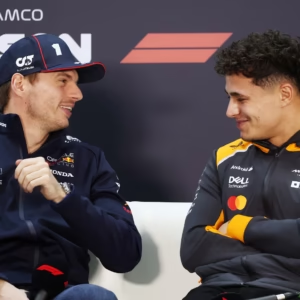During the press conference of the 2017 Australian Grand Prix a journalist asked the drivers their Top 3 wishlist to ask Liberty Media, the then new owners of Formula 1. No-brainer for Daniel Ricciardo: “Race in Vegas”.
His dream came true on March 31st 2022, when it was announced that the Sin City would’ve hosted the third American race on this year’s calendar. Greg Maffei, President and CEO of Liberty Media, said: “Iconic Las Vegas and Formula 1, the pinnacle of motorsport, is the perfect marriage of speed and glamour”. But is it, really? It’s no secret that F1 is getting bigger and bigger in the US, but in the last few months controversies sparkled about the Grand Prix.
The bizarre schedule
The first thing you have to know about this weekend is the bizarre (to say the least) schedule. To maximise the spectacularity of racing in Vegas, the organizers wanted a night race, with the iconic skyline all lit up. At the same time, they had to consider time zones and the European fans.
As a Sunday night race in Vegas would’ve meant a Monday morning start in Europe the solution was to… race on Saturday, with the Grand Prix weekend starting on a Thursday. Weird, right? Well, that’s not all.
The FP2 and Qualifying sessions will start at midnight, which is really late, if you consider that in Singapore they start at 5:30 pm. Also, the race starts at 10 pm Pacific Time which translates as 1 am on the East Coast. This means that a lot of potential viewers in the US simply may not be awake to watch it.
It seems that the American public, which F1 cares so much about winning over, will actually be the one most penalized by these schedules.
The Circuit and Its Costs
The Las Vegas Grand Prix will take place on a temporary street circuit that includes the iconic Strip, with its resorts and casinos. It will be 6,201 km long and the drivers will go around the seventeen corners 50 times to claim victory, for a grand total of 310,050 km. The estimated top speed is 342 km/h.

To host such a huge event, the city had to go through some major changes that affected everyday life for residents.
To create the track, it was necessary to embark on an extensive street paving project. It required removing up to 25 cm of road, replacing it with denser pavement and then applying a smooth racing layer. This meant road closures, often unannouned, that made it very difficult to travel through the area, especially for people working on the Strip.
Add to the list the construction of paddock and pit facilities, the cutting of trees in front of the Bellagio and the emptying of fountains to make room for the grandstands. Finally, during race days four roads will close from 7 pm to 2 am. How will guests and workers access the 23,000 hotel rooms within the circuit?
On top of that, most of the residents won’t even be able to attend their hometown race, with the least expensive tickets costing $500.
All of this lead to Greg Maffei apologizing to the people of Las Vegas for these challenges. He trusts the fact that there will be at least 105,000 spectators, plus people visiting even if they don’t have tickets for the race. Also, reasearches estimate that the Grand Prix will bring $1.7 billion of revenue to the area. Maybe the disruption will be worthwhile for the business.
Pit Lane and Temperatures
To build excitement about the Grand Prix, the official Twitter account posted an aereal view of the pit, looking impressive, but something else caught the attention of F1 fans.
The picture shows the pit exit layout which is definitely thight and risky, mergining with the racing line and into Turn 1. This requires drivers to stay on the left side of the track to avoid a penalty. Given the nature of the Turn, the drivers already on track will try remaining on the inside to follow the racing line. Also, there’s a little distance with Turn 2 and 3, all of them being left hand turns. This means that if a driver stays on the right on Turn 1, his performance will be affected in the following corners.
Of course, in these conditions it is pivotal for tires to be adequately warmed up to avoid a crash with the wall or even another driver coming off the straight. The problem is, the Las Vegas Grand Prix is expected to be one of the coldest in F1 history, with temperatures around 5 degrees. Tires will take longer than usual to warm up and this represents a problem with drivers exiting the pits and than having to do a sharp left.
Ross Brawn himself admitted that F1 simply didn’t think about the cold temperatures and that making the cars work in these conditions will be challenging, but he’s not worried. In his words: “Surely, we will face new challenges that we have never encountered before, but I think it will be spectacular.”
But is spectacularity really worth all of it? Only time will tell.



